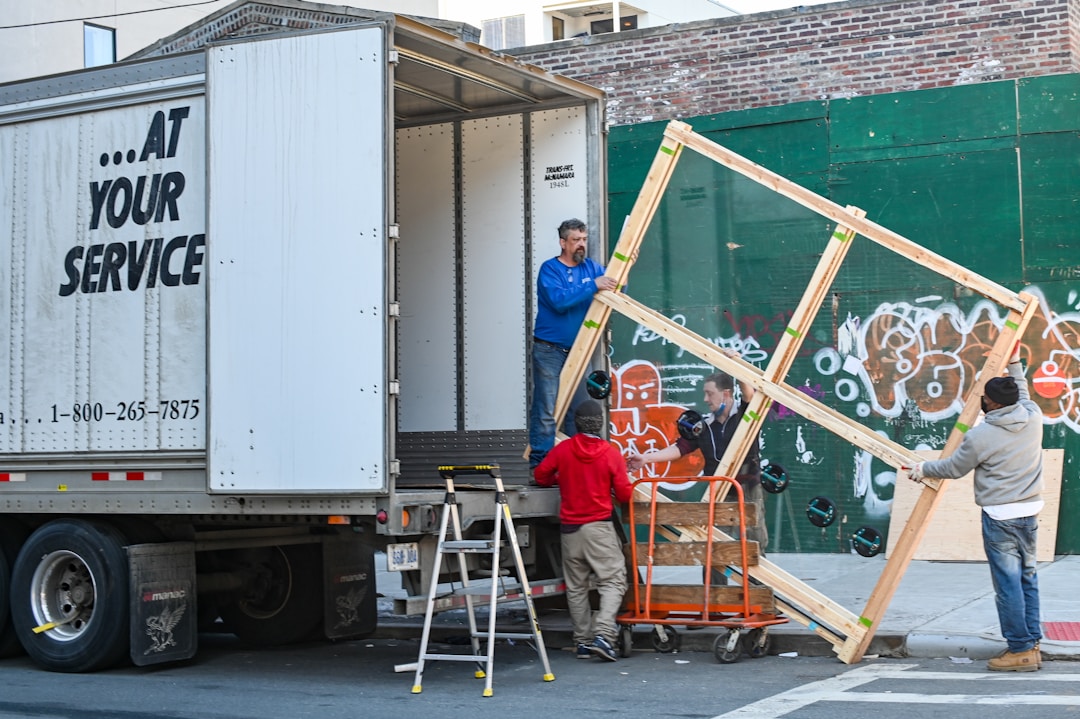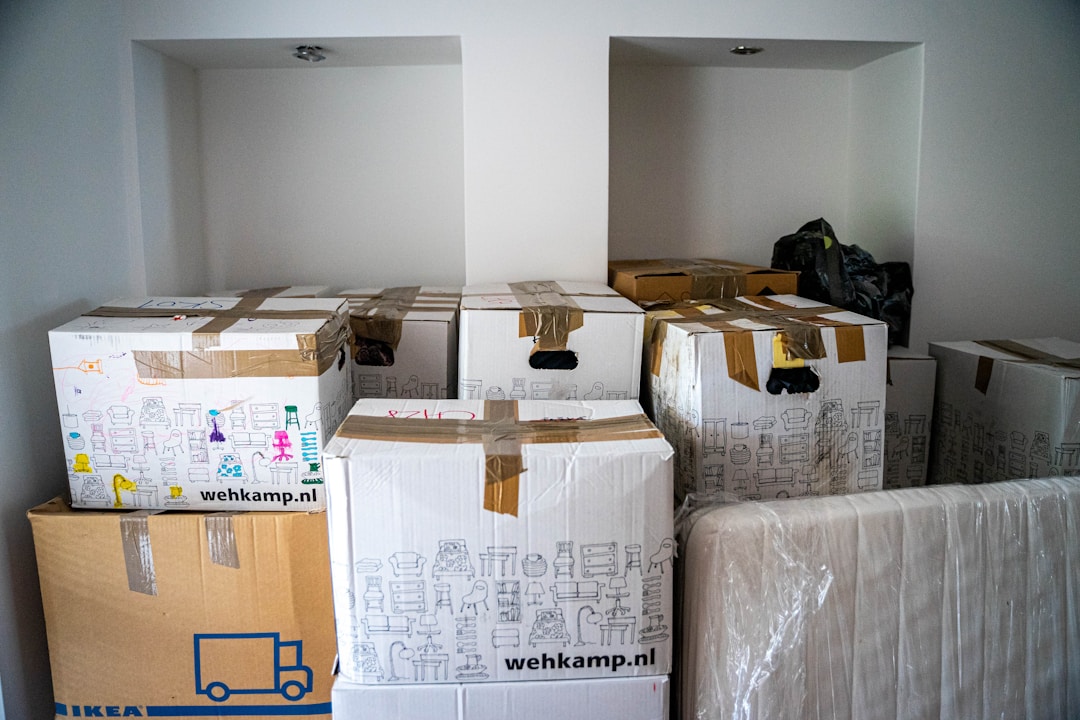Are you planning to move to a new location, but you’re not sure where to start? Moving is a tiring process, and it can get overwhelming without proper guidance or a good plan of action. This article offers you a step-by-step guide that will help make your moving process hassle-free. Together, we will consider every aspect of your move, everything from the initial preparations to the emotional well-being during the transition. We will also share tips on how to save on moving costs, organizing your belongings, and effectively settling into your new home. Keep reading to find out more about what you need to do to ensure a smooth transition during your move.
Choosing the Right Moving Company

Choosing the right moving company is a crucial aspect of your move. A reliable company will ensure the safety of your belongings and make the moving process easier. Research reputable companies and compare their services, costs, and customer reviews. You can obtain quotes from different providers to help make an informed decision. A reputable moving company will have transparent pricing, provide clear information about their services, and have a history of satisfied customers.
Depending on where you live, you can search for “Phoenix movers,” for example, to find experienced movers in your area. You’ll want a company that offers a wide range of moving services tailored to meet each client’s unique needs. Be sure to inquire about all included services and clarify any questions you may have. A reputable company will also offer insurance services to cover lost or damaged belongings during the move.
Ask about the experience of the moving team. A company with experienced staff will be able to handle your belongings with the care and professionalism they deserve. Ensure that the movers are trained in packing, loading, and unloading items, especially delicate or valuable ones.
Creating an Organized Strategy for Your Move
Planning is an essential aspect of any significant event, particularly moving to a new home. Knowing what you need to do and when to do it can significantly alleviate the stress associated with moving. Begin by creating an organized strategy, which you can start by listing down everything you need to accomplish within a specific timeline. Use a moving checklist as a reference, and be sure to include tasks such as hiring professional movers, notifying utility companies of your move, changing your address with the post office, and sorting out your belongings.
In your strategy, start with what needs to be done several weeks before the move. This includes finding a moving company, arranging new living circumstances, and setting a budget. At this stage, allocate tasks to different family members to make the process less overwhelming. Moving should be a team effort, and everyone should participate in making the process smoother. Include even the smallest tasks in your strategy to avoid forgotten details that may cause trouble later on.
As the moving day approaches, ensure that you review your strategy periodically. Reconfirm your arrangements with the movers, verify that utility and mail services have been transferred, and check that all your belongings have been properly packed. Be sure that you’re leaving nothing behind and that everything is going according to plan.
Purging and Packing Your Belongings

Packing is one of the most demanding tasks when moving. Proper packing is essential to protect your belongings from damage during transportation. Before you start packing, however, you might want to purge some of your belongings to help make the process easier. You can donate clothes and other unused or unwanted items to charity, or you could have a garage sale to help offset some of the moving expenses.
Once you’re ready to start packing, you’ll want to do so weeks before your move, if possible. Pack room by room to avoid mixing items from different rooms in the same box, making it easier to unpack when you arrive at your new home. You’ll also want to use quality packing materials, including sturdy boxes, packing tape, bubble wrap, and packing paper. Label the boxes clearly to indicate their contents and the rooms where they belong. Be sure to mark boxes containing fragile items.
Preparing for Moving Day
Proper preparation is key for a smooth moving day. A few days before the move, confirm the moving time with your movers and ensure that they have the correct address. Prepare your home by protecting the floors and walls from possible damage during the move.
It’s also important to arrange for someone to take care of your children and pets on your moving day, as they can easily get stressed and confused during the moving process.
Finally, pack an essentials box containing necessary items for the first day or two in your new home, such as toiletries, clothes, and basic kitchen utensils. This will allow you to get settled in your new place without having to unpack everything immediately.
Settling Into Your New Home

After the boxes have been unloaded in your new home, the next step is to settle in. Start by checking and making sure that all utilities are working correctly. Be sure to unpack the essentials first, then gradually unpack the rest of the boxes according to your needs.
You may want to deep clean your home before settling in completely. This can be a DIY task, or you can hire professional cleaners to handle it. This is not a mandatory task, but doing so can help you feel more comfortable in the new environment.
Meet your new neighbors and familiarize yourself with the new neighborhood. Your neighbors may offer helpful tips such as locations of nearby grocery stores, schools, parks and information about the community’s customs and regulations.
Dealing with Post-Move Emotions
Moving can bring up a bunch of different emotions, from excitement to anxiety, frustration, and even sadness. It is okay to feel overwhelmed. Give yourself time to adjust and accept these feelings as part of the moving process.
Don’t rush the process. Organize your living areas with pace and flexibility and focus more on enjoying your new environment. Each day, focus on making the unfamiliar familiar, whether it is meeting a new neighbor, checking out a nearby park, or setting up a space that feels comfortable.
If you are moving with children, bear in mind that they may experience emotions similar to yours. Ensure you communicate with them about the move, involve them in the moving and unpacking process, and allow them to express their feelings. It’s crucial to let them know that it’s okay to miss their old home and friends.
Maintaining Your Budget During the Move

Moving is financially demanding. Hiring movers, buying packing supplies, and other related costs can quickly add up. Therefore, it’s essential to budget for your move as early as possible. An organized budget will help you keep track of your expenses and avoid overspending.
The first thing to consider in your moving budget is the cost of hiring a moving company. Some companies offer a flat-rate fee, while others charge based on the number of belongings. Be sure to include additional costs, such as packing services and insurance, in your budget.
If you’re moving far, remember to include travel expenses, such as fuel, accommodation, and meals, in your budget. Also, consider any costs related to setting up your new home, such as utility deposits, repairs, and decoration.
Altogether, moving is a significant life-changing process that requires adequate preparation and attention to detail. It’s normal to feel overwhelmed, but with this guide, it’s our hope that your moving process will be smoother and less stressful.



